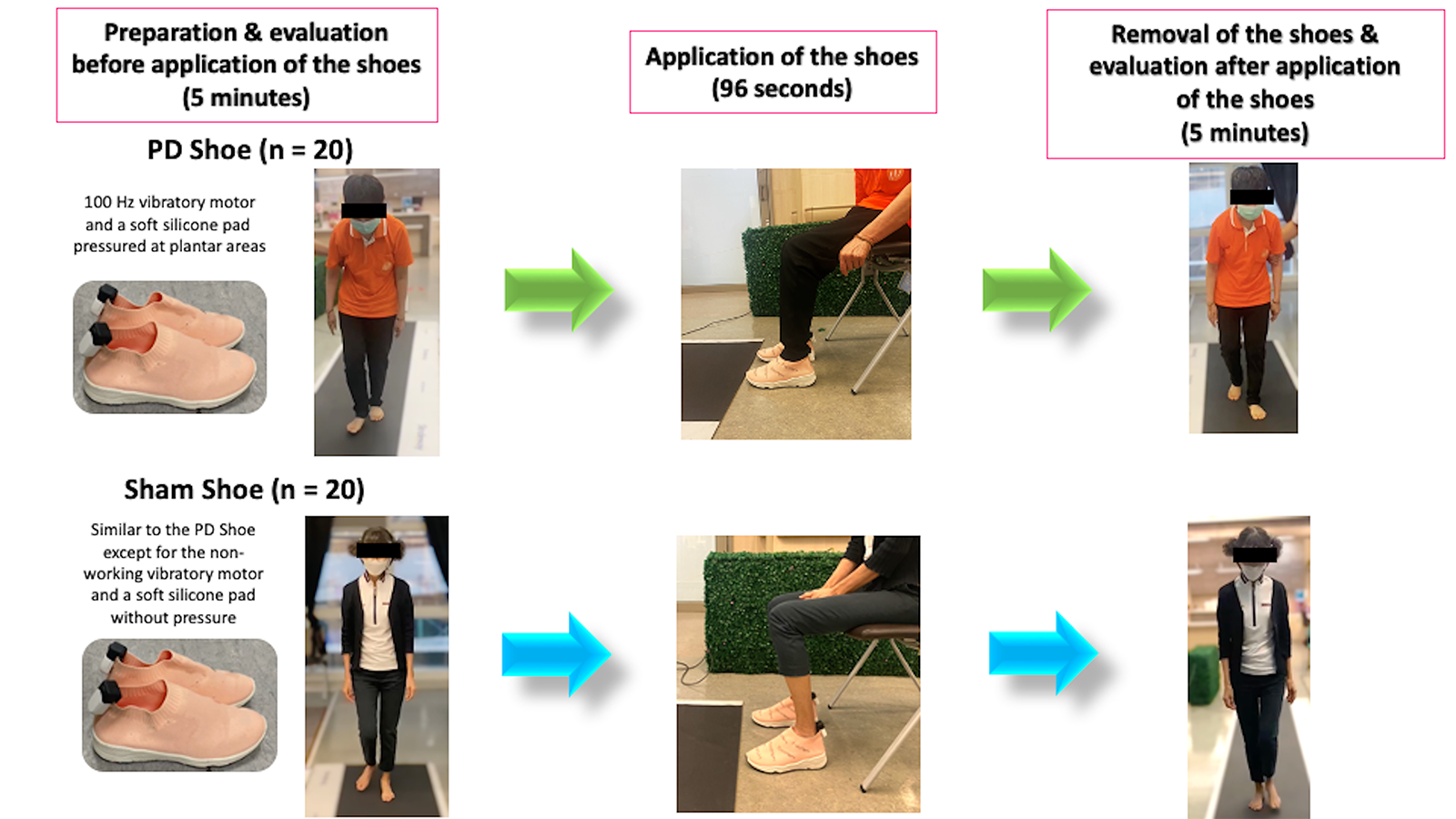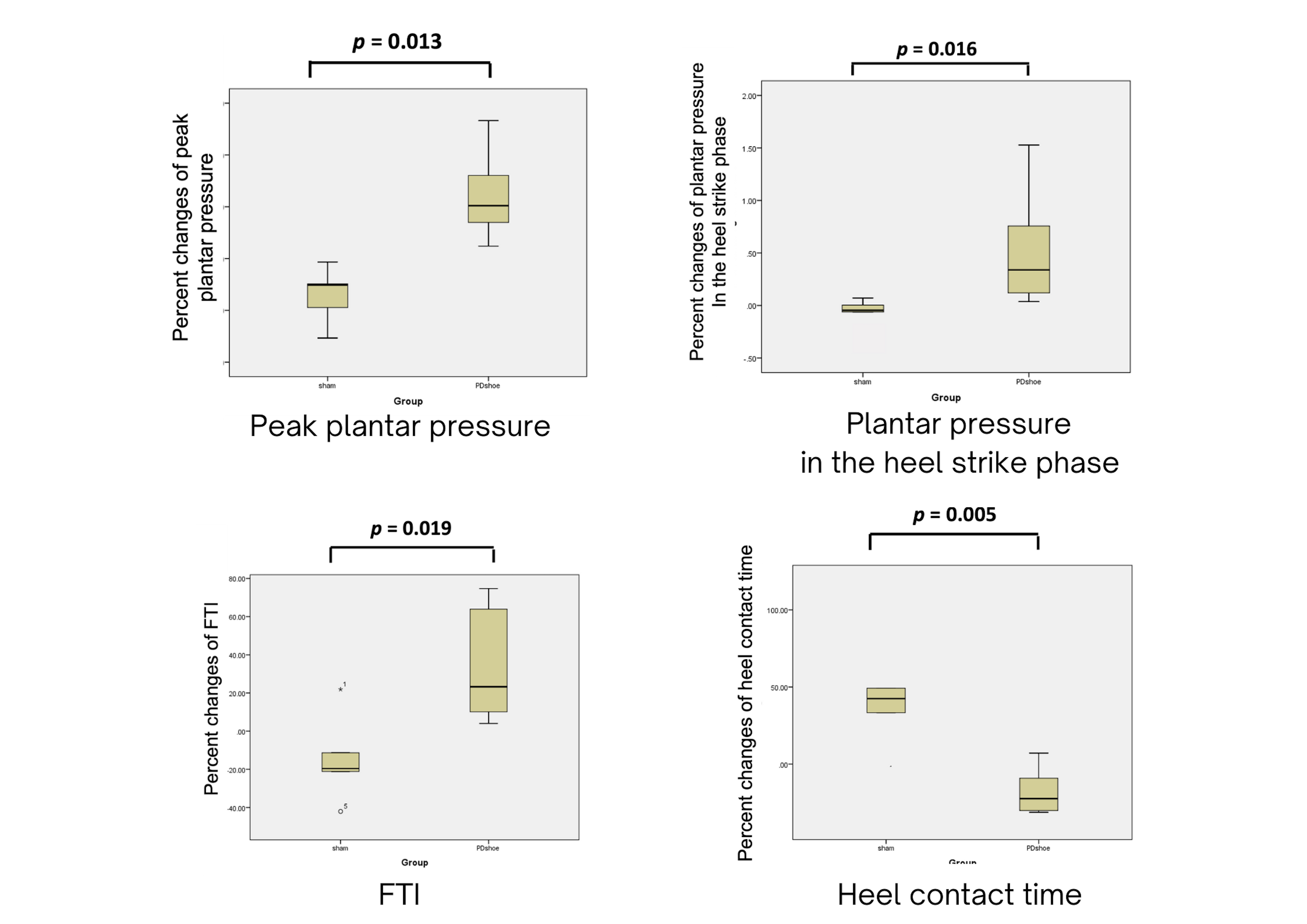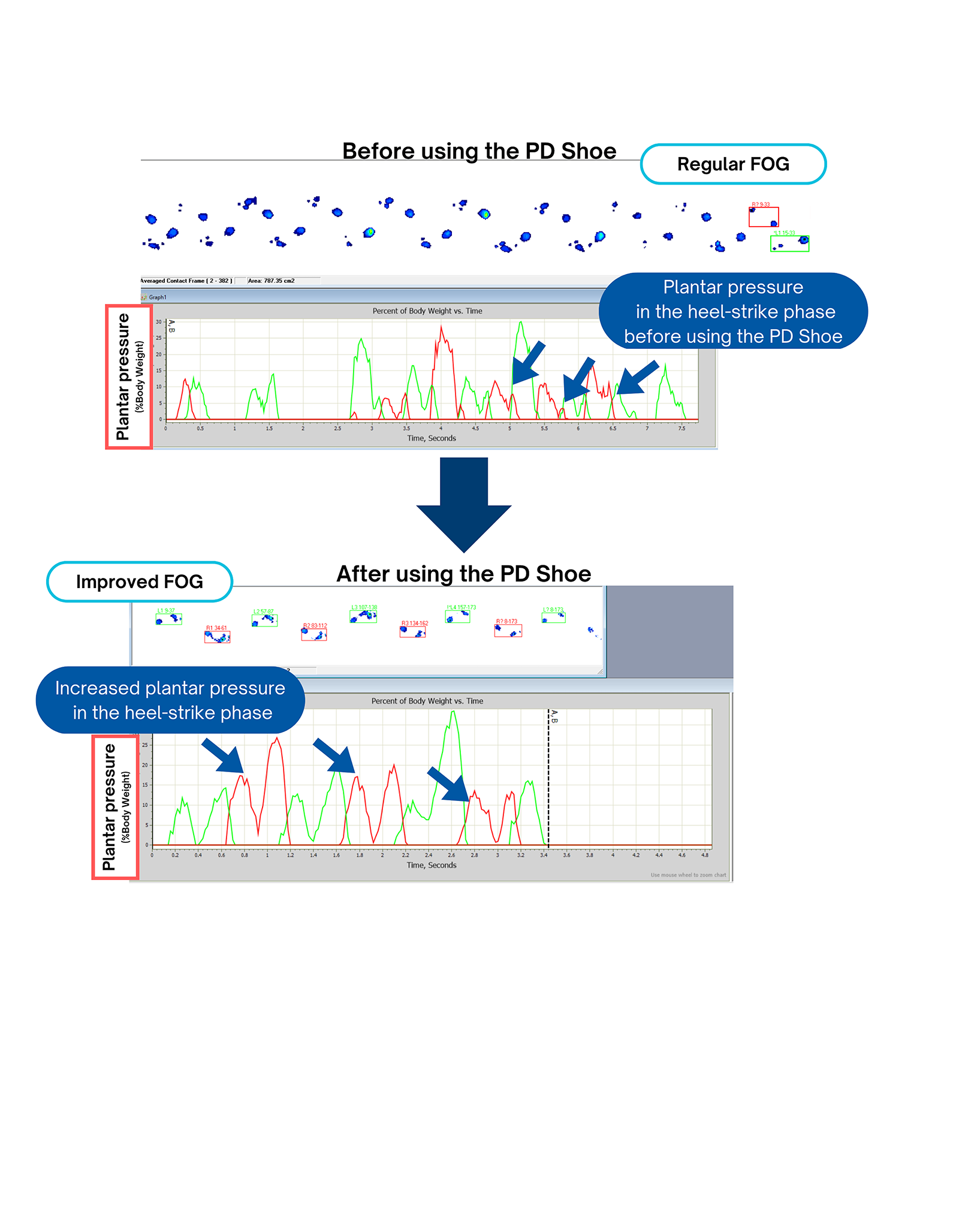Objective: To explore the effect of PD shoes on plantar pressure in PD patients with FOG.
Background: Dysfunction of peripheral sensory systems, including decreased cutaneous mechanoreceptors and abnormal plantar pressure, are important mechanisms that contribute to freezing of gait (FOG) in PD. Combining plantar pressure and vibratory stimulation has been shown to decrease FOG, and improve spatiotemporal gait parameters at and prior to FOG onset compared to single stimulation [1,2]. The effect of Parkinson shoe (PD shoe) with embedded combined plantar stimulations on plantar pressure should be explored to further understand the impact of peripheral sensory systems in the pathophysiology of FOG in PD.
Method: Forty PD patients with regular FOG were recruited and allocated to either PD shoes, that contained a 100 Hz vibratory stimulation at the Achilles tendons with a switch circuit and a soft silicone pad to apply pressure at plantar areas, or sham shoes with a non-working vibratory motor and a soft silicone pad without pressure (20 patients per arm). Patients wore either PD or sham shoes for 5 minutes prior to the objective gait assessments with plantar pressure analysis (figure 1). Outcomes included normalised percentage of change in percent FOG (%FOG), overall peak plantar pressure, plantar pressure in the heel-strike phase, force time integral (FTI), and heel contact time between pre- and post-stimulations.
Results: The PD shoe group showed significantly decreased %FOG (81.49±29.65%vs6.84±22.72%, p<0.001), increased peak plantar pressure (34.34±26%vs0.03±1.79%, p=0.013), increased plantar pressure in the heel-strike phase (49.94±50.21%vs6.43±13.59%, p=0.016), increased FTI (34.19±28.64%vs14.44±23.26%, p=0.019), and decreased heel contact time (18.40±13.67%vs44.30±38.98%, p=0.005) when compared to the sham group (figure 2,3). There was a negative correlation between %FOG and plantar pressure in the heel strike phase (r=-0.663, p=0.014).
Conclusion: Our study demonstrated that the PD Shoe could decrease FOG by improving plantar pressure, increasing the heel-strike phase but decreasing heel contact time compared to sham shoes in PD patients with FOG. This suggests that peripheral sensory stimulations might have a significant effect on the pathophysiology of FOG and PD shoes could be a novel option for treatment of FOG.
References: [1]. Phuenpathom W, Panyakaew P, Vateekul P, Surangsrirat D, Hiransuthikul A, Bhidayasiri R. Vibratory and plantar pressure stimulation: Steps to improve freezing of gait in Parkinson’s disease. Parkinsonism Relat Disord. 2022 Dec;105:43-51.
[2]. Phuenpathom W, Panyakaew P, Bhidayasiri R. A Novel Parkinson Shoe: A potential treatment of Unresponsive Freezing of Gait in Parkinson’s Disease Patients [abstract]. Mov Disord. 2022; 37 (suppl 1).
To cite this abstract in AMA style:
W. Phuenpathom, P. Panyakaew, P. Vateekul, D. Surangsrirat, R. Bhidayasiri. A Parkinson Shoe with Combined Plantar Pressure and Vibratory Stimulation in Parkinson’s Disease Patients with Freezing of Gait: A Randomized Controlled Trial with Plantar Pressure Analysis [abstract]. Mov Disord. 2023; 38 (suppl 1). https://www.mdsabstracts.org/abstract/a-parkinson-shoe-with-combined-plantar-pressure-and-vibratory-stimulation-in-parkinsons-disease-patients-with-freezing-of-gait-a-randomized-controlled-trial-with-plantar-pressure-analysis/. Accessed January 1, 2026.« Back to 2023 International Congress
MDS Abstracts - https://www.mdsabstracts.org/abstract/a-parkinson-shoe-with-combined-plantar-pressure-and-vibratory-stimulation-in-parkinsons-disease-patients-with-freezing-of-gait-a-randomized-controlled-trial-with-plantar-pressure-analysis/



